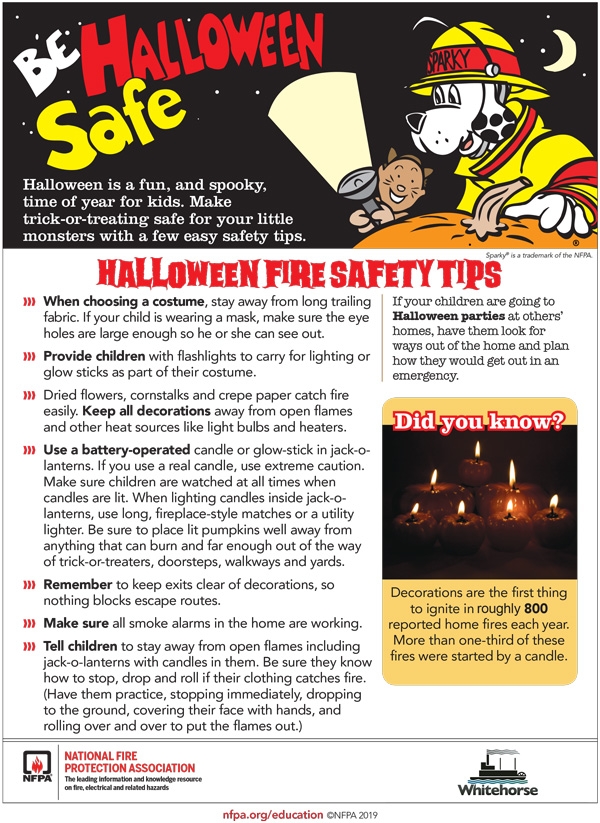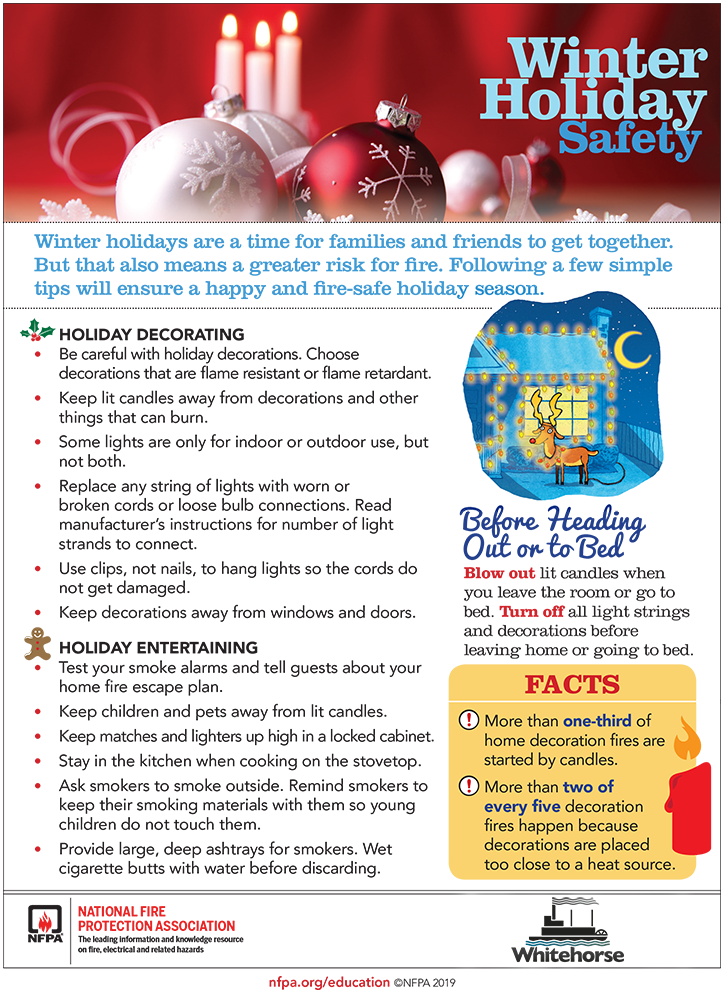Fire Prevention and Education
Safety In The Home
Take some time to review the ways you and your family can stay safe in your home, workplace, and community. Check out these home fire safety tips from the Government of Canada, and below.
Burning with wood, open burning, installing and maintaining your stove and more.
Protect yourself and your family from CO
Carbon monoxide is a highly poisonous gas. You can’t smell it and you can’t see it, but it can make you very sick—it can even kill you.
Carbon monoxide (CO) is created when appliances that burn any kind of fuel—oil, gas, wood and kerosene—aren’t ventilated properly. CO build-up happens when a fuel-burning heating appliance has been incorrectly installed, badly repaired or poorly maintained. It can also occur if flues, chimneys or vents to the outdoors are blocked.
Carbon monoxide alarms will alert you to danger and could save your life—and they are required by law. Put an alarm on every level of your home, outside each sleeping area and in each bedroom. Test the battery monthly, change the batteries twice a year and replace the alarms every 10 years.
- A continuous set of four loud beeps—beep, beep, beep, beep—means carbon monoxide is present in your home. Go outside, call 9-1-1 and stay out.
- A single chirp every 30 or 60 seconds means the battery is low and must be replaced.
- CO alarms also have “end of life” sounds that vary by manufacturer. This means it’s time to get a new CO alarm.
- Chirping that continues after the battery has been replaced means the alarm is at the end of its life and the unit must be replaced.
Learn more about preventing carbon monoxide exposure and how to install CO detectors at yukon.ca/en/carbon-monoxide.
Thanks to Yukon Protective Services Emergency Preparedness for this content.
Do you have working smoke and carbon monoxide alarms in your cabin, RV, and wall tent?
Recreational spaces are usually small and can fill up with smoke or carbon monoxide rapidly. Protect yourself and your family by having working alarms in your home away from home. Stay safe on your adventures and be sure you’ll hear the beep where you sleep.
Watch this video courtesy of Perth East Fire Department
We have had recent calls involving Carbon Monoxide (CO) alarms at residential properties. Upon investigation, we have determined the root cause to be linked to the charging of lead-acid batteries in an enclosed area and often when being trickle charged. This charging process often leads to off gassing of Hydrogen through venting holes in the battery that are designed for this process.
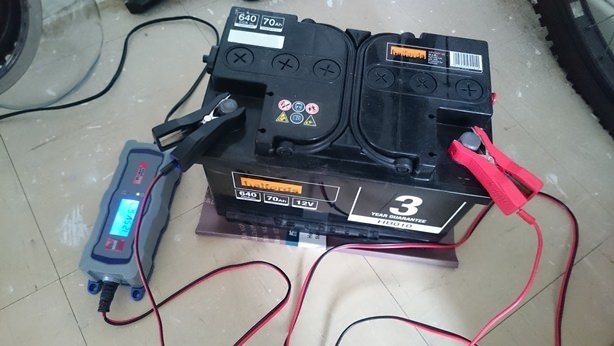
Lead-acid batteries produce Hydrogen when charging
Carbon Monoxide detectors use something called a “Metal Oxide Semiconductor (MOS)” sensor, which detects a variety of gases including Hydrogen. A MOS sensor calibrated for CO will give a false positive in the presence of Hydrogen gas. A small confined space can create an explosive atmosphere if Hydrogen reaches its Lower Explosive Limit (LEL) of 4%.
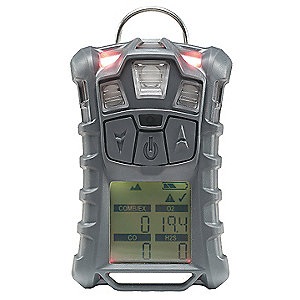
Safety
Ensure adequate ventilation is provided while charging batteries. Besides the toxicity and flammability of these substances, it should be kept in mind that they will all also displace oxygen. Unconsciousness can result in as little as a few seconds’ exposure to an oxygen deficient atmosphere and for that reason, you should evacuate the building immediately anytime Carbon Monoxide alarms are ringing. Call 911, get out and stay out until the atmosphere can be tested and proven safe.
Tips for charging batteries
- Charge batteries in a well ventilated area
- Follow manufacturer’s instructions
- Be careful when attaching / detaching clamps and ensure correct polarity
- Clean battery terminals according to manufacturer’s instructions before recharging
- Do not attempt to charge a frozen or damaged battery
- Monitor the charging process
- Turn off charger before disconnecting
- Unplug the charging device when completed
- Remember, don’t become a victim – Stay Safe!
Please ensure that smoke and carbon monoxide alarms are properly functioning, and conduct routine testing.
In the event of a power outage, do not use outdoor barbeques or heating devices inside your home or garage. If you have an emergency gasoline-powered generator, keep it well away from doors and windows to prevent carbon monoxide from entering your home.
As part of the City’s emergency preparedness plans, the Canada Games Centre will be converted into a warming centre for those without power during periods of prolonged power outages.
Space heaters must be kept at least three-feet away from any combustible material, and always plugged directly into electrical outlets – do not use extension cords. Remember to never leave space heaters unattended or with unsupervised children or pets.
Keep your home safe by having annual inspections of heating appliances prior to the winter season. A woodstove, even if only used for back-up heating, needs an annual inspection by a qualified technician.
Be prepared for emergencies year round – be able to sustain your household for a minimum of 72-hours without power or running water.
For more information on keeping your home safe this winter, please contact Whitehorse Fire and Protective Services at 668-2462.
The dangers of extension cords:
- Extension cords are a common cause of electrical fires. That is why you must be careful to use only extension cords that are rated for the power used by the device they are powering.
- Extension cords must never be run inside walls or under rugs or furniture. They can be damaged by traffic or heavy furniture and start arcing, which can lead to a fire.
- Extension cords can get warm during use and must be able to dissipate this heat or they can start a fire.
Signs of an electrical problem:
- Flickering lights: if the lights dim every time you turn on an appliance it means that the circuit is overloaded or has a loose connection.
- Sparks: if sparks appear when you insert or remove a plug, it could be a sign of loose connections.
- Warm electrical cord: if an electrical cord is warm to the touch, the cord is underrated or defective.
- Frequent blown fuses or broken circuits: a fuse that continues to blow or circuit breaker that keeps tripping is an important warning sign of problems.
- Frequent bulb burnout: a light bulb that burns out frequently is a sign that the bulb is too high in wattage for the fixture.
As the owner or manager of a building, you are responsible for the safety of the people who live or work there. Fire protection begins with good planning. A properly developed Fire Safety Plan protects building occupants, reduces damage, and prevents emergencies. It helps building occupants gain familiarity with emergency procedures.
The following template can be used to create a Fire Safety Plan. The National Fire Code of Canada (Division B Part 2.8) requires the implementation of a Fire Safety Plan in all buildings. The implementation of a Fire Safety Plan helps to ensure effective use of life safety features in a building to protect people from fire. The required Fire Safety Plan should be designed to suit the resources of each individual building or complex of buildings. It is the responsibility of the owner to ensure that the information contained within the Fire Safety Plan is accurate, complete and reviewed annually.
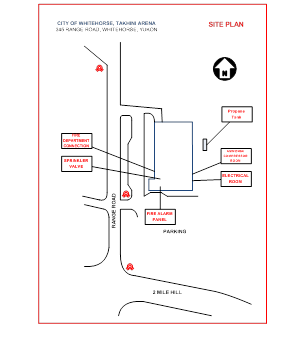
Should you have any questions or concerns in meeting compliance requirements, contact the Fire Prevention Officer.
Smoke Alarms Save Lives: Test Yours Every Month!
The National Fire Code of Canada requires that working smoke alarms be located on every level of the home and outside all sleeping areas.
Your safety is your responsibility.
Only working smoke alarms save lives.
In fact, smoke alarms can increase your chances of surviving a fire by up to 50%!
- A continued set of three loud beeps—beep, beep, beep—means smoke or fire. Get out, call 9-1-1, and stay out.
- A single “chirp” every 30 or 60 seconds means the battery is low and must be changed.
- All smoke alarms must be replaced after 10 years.
- Chirping that continues after the battery has been replaced means the alarm is at the end of its life and the unit must be replaced.
Make sure you:
- Test smoke alarms monthly;
- Change the batteries once a year;
- Replace smoke alarms after 10 years; and
- Develop and practice a home fire escape plan with everyone in your household.
Do you have working smoke and carbon monoxide alarms in your cabin, RV, and wall tent?
Recreational spaces are usually small and can fill up with smoke or carbon monoxide rapidly. Protect yourself and your family by having working alarms in your home away from home. Stay safe on your adventures and be sure you’ll hear the beep where you sleep.
For any questions please contact the Whitehorse Fire Department at 867-668-2462.
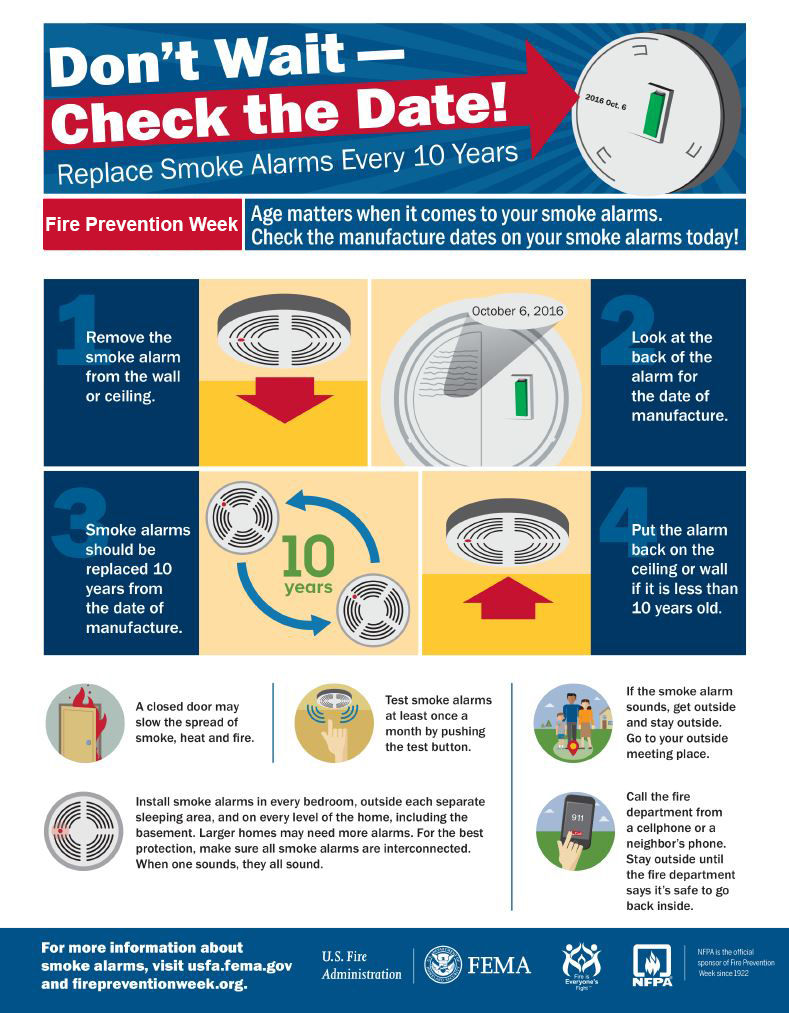
Outdoor Fire and Safety
Take some time to review the ways you and your family can stay safe outdoors.
Payments for open burning permits can be made online, see our online payment information guide.
Before Lighting Your Fire
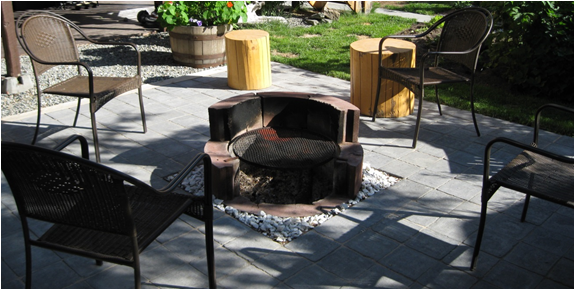
Backyard fire pits and fireplaces are a great way to enjoy the outdoors, but they can be dangerous and the smoke and noise can disturb your neighbours. Here are some guidelines from the Whitehorse Fire Department to safely experience outdoor fires.
Click here for guidelines on Backyard Fire Pits.
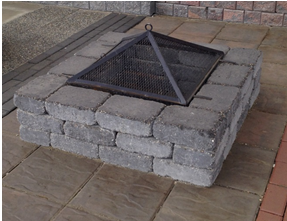
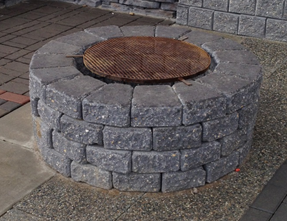
Fire pits are regulated under the Emergency Services Bylaw 2024-44.
Burning of compostable materials is not permitted. Please take compostable materials to the Waste Management Facility, or into your green organics bin for Curbside Collection.
Burning of construction waste is not permitted. Construction waste includes material from construction and demolition activities such as broken concrete, drywall, metal, wood that is painted or contains nails, pieces of glass, bricks, etc.
Burning clean dry wood is always good.
Limiting Noise and Smoke
While you may enjoy the smell of wood smoke, not everyone does. Some medical conditions are aggravated by smoke. Make sure that your fire is small and burning clean, dry fuels to limit the amount of smoke drifting on to your neighbours’ property.
It is also important to limit the noise from around the fire pit, especially late at night.
For more information, please call Fire and Protective Services at 668-2462.
In the event of an emergency, call 9-1-1
Campfires
Every year, the Whitehorse Fire Department responds to unattended fires throughout the community. Warm conditions also increase the risk of wildfires which can spread quickly, damage property and create the potential for loss of life.
If you choose to have a fire, remember these fire safety tips:
• Only burn where permitted or within an approved fire pit.
• Don’t burn in windy conditions. Keep the fire in check.
• Never leave your fire unattended.
• When you’re finished, remember to properly put out your fire and soak, stir, repeat until cold to the touch.
• In the event of an emergency, call 9-1-1.
For more information on burning within city limits, visit whitehorse.ca/fire.
For current Yukon fire conditions, visit Yukon.ca
Before you BBQ
• Use a good quality untreated charcoal on your grill. Ash from untreated charcoal can be used in your garden. Treated (typically sold as ‘easy to light’) charcoal ashes shouldn’t be used as they can be toxic.
• Use the minimum amount of charcoal possible. Always follow any manufacturer’s instructions that came with your BBQ, but typically a 2 inch / 5cm layer of charcoal in the bottom of your grill is more than enough.
• Don’t place your barbecue near anything that might melt or catch fire, like your house, avoid fences (and Curbside Collection carts).
• Keep a bucket of water or sand nearby while cooking – just in case you need to put out the BBQ quickly.
Disposal of coals
We recommend that you leave 48 hours to allow the ashes / embers from a BBQ to cool down completely. Even then, be cautious when disturbing the ashes as doing so can introduce oxygen and reignite smouldering coals which in turn may set fire to materials nearby or in your bin, or simply melt your bin. Carefully rake through the ashes to check for smouldering and to help release residual heat. If in any doubt, douse them with water and or sand before moving them.
If you cooked with untreated charcoal, the ash can go in your Green Cart. If you used treated charcoal, or used a liquid fire fuel, please dispose in your Black Cart.
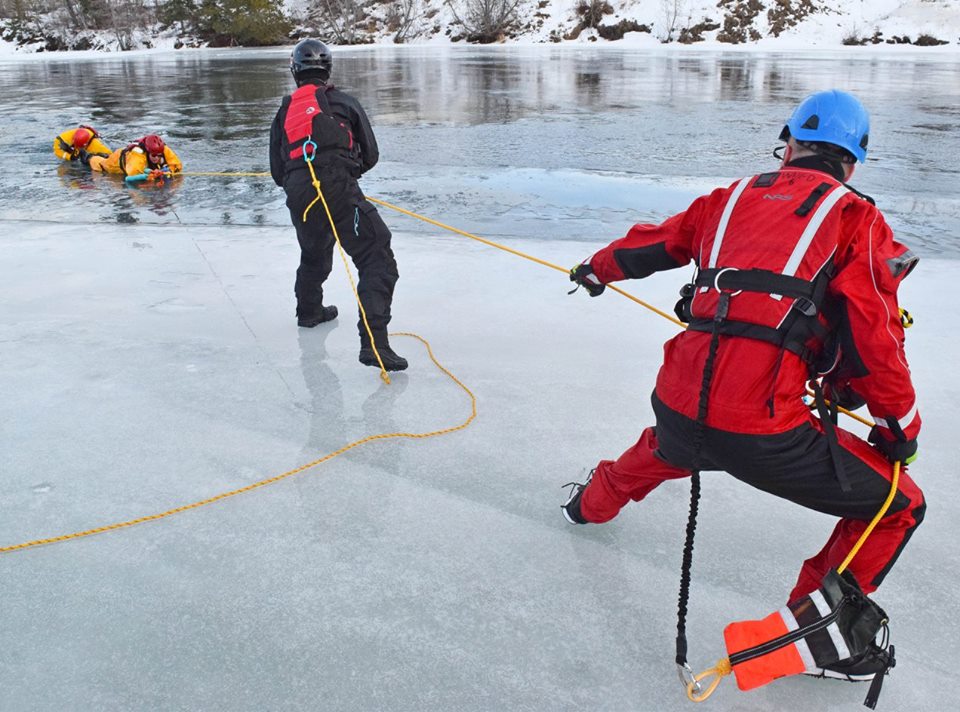
Snowmobiling, ice fishing and cross country skiing are some activities that happen on the ice. Ice thickness should be at least 10 centimeters (4 inches) to safely support one person, and more if vehicles are present. If your work or recreation activities take you out onto the ice, wear a personal flotation device and take safety equipment with you. Do not go out onto the ice alone.
Fast moving rivers such as the Yukon River freeze and melt at different rates and are even more unpredictable than lakes and ponds. We encourage citizens to stay off river ice and as an alternative, please choose the use of designated ice surfaces such as local community ice rinks.
If you do find yourself in a dangerous situation involving ice, please remember:
- Call 9-1-1 if you, another person or your pet needs assistance
- Stay calm and shout for help
- Have a long branch, rope or pole to reach someone, but do not become a victim
- Keep low and distribute your weight as much as possible
- If you break through the ice, if possible make an attempt to climb out where you fell through
- Be prepared to start a fire to mitigate the effects of hypothermia
Parents are encouraged to speak to their children about the dangers of going out onto the ice. Always supervise children playing on or near ice or bodies of water and keep pets on a leash.
Whitehorse Fire and Protective Services would like to remind residents of the dangers posed by our Yukon rivers, lakes and ponds. Our waterways are often high and swift from rains and snow melt can easily overwhelm the strongest swimmer.
With the hot summer days that we have experienced over the last couple of weeks these waters still remain very cold and dangerous year-round. The surface of the water is often warmer than what it is below and hypothermia can occur quickly in our chilly waters.
Always supervise young children when near lakes, ponds and especially rivers. The rivers are moving relatively fast and obstacles such as rocks or logs can trap swimmers and overturn Kayaks.
Please wear protective clothing when doing recreational sports such as a personal flotation device that properly fits you and your children.
Have a safe and enjoyable summer.
Fire Prevention
Fire Prevention Week is October 6 to 12, 2024
The Whitehorse Fire Department encourages all residents to embrace the 2024 Fire Prevention Week theme, “Smoke alarms: Make them work for you.”
Make sure your smoke alarms are in the right places, working and up to date!
Some tips from the National Fire Protection Association (NFPA) and Whitehorse Fire and Protective Services:
- Install smoke alarms in every bedroom, outside each separate sleeping area (like a hallway), and on each level of the home, including the basement.
- If you’re out hunting this fall or plan to winter camp, install a battery-powered smoke alarm in your camper or wall tent. Beep where you sleep.
- Test smoke alarms at least once a month by pushing the test button.
- Learn the sound of your smoke alarm. Make sure everyone knows that when the smoke alarm sounds, it’s time to get out and call 9-1-1.
- Replace all smoke alarms when they are 10 years old or stop responding when tested.

